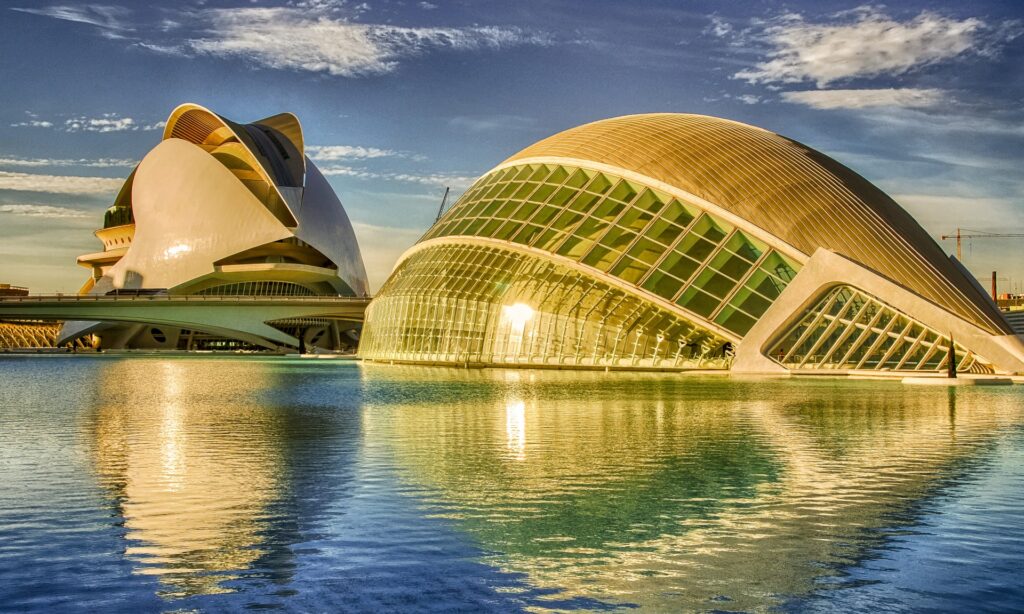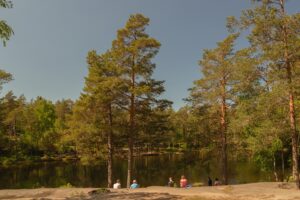Nestled in the heart of Valencia, Spain, the City of Arts and Sciences is a sprawling architectural marvel that captivates visitors with its futuristic design and cultural offerings. This iconic complex, designed by Santiago Calatrava and Félix Candela, is a must-visit destination for anyone interested in architecture, science, and the arts. With its striking structures and engaging exhibits, the City of Arts and Sciences offers a unique experience that blends education, entertainment, and innovation.
What to See
The City of Arts and Sciences is composed of several distinct buildings, each offering something unique. The Hemisfèric, resembling a giant eye, is an IMAX cinema and planetarium where you can enjoy breathtaking films and astronomical shows. The Science Museum, with its interactive exhibits, invites visitors to explore the wonders of science and technology in a hands-on environment. The Oceanogràfic, Europe’s largest aquarium, showcases marine life from various ecosystems, including the Arctic, Mediterranean, and Red Sea. The Palau de les Arts Reina Sofia is an opera house and performing arts center, hosting a variety of concerts and performances. Lastly, the Umbracle is a landscaped walkway and garden, perfect for a leisurely stroll while enjoying the surrounding architecture.
A Bit of History and Interesting Facts
The City of Arts and Sciences was inaugurated in 1998, with the completion of the Hemisfèric. Over the years, additional structures were added, culminating in a complex that spans nearly two kilometers. The project was part of a broader initiative to revitalize Valencia and position it as a cultural and scientific hub. The design of the complex is inspired by natural forms and futuristic aesthetics, with extensive use of white concrete and glass. An interesting fact is that the Oceanogràfic is home to over 45,000 animals from 500 different species, making it a significant center for marine research and conservation.
Getting There and Tips for First-Time Visitors
The City of Arts and Sciences is easily accessible from the city center of Valencia. You can take a bus, with several lines stopping near the complex, or opt for a taxi or ride-sharing service for convenience. If you prefer public transport, the nearest metro station is Alameda, from where you can enjoy a pleasant walk through the Turia Gardens to reach the complex.
For first-time visitors, it’s advisable to allocate a full day to explore the entire complex, as there is much to see and do. Purchasing a combined ticket for multiple attractions can save you money and time. Wear comfortable shoes, as you’ll be doing a lot of walking, and don’t forget your camera to capture the stunning architecture. If you’re visiting during the summer, bring sunscreen and a hat, as Valencia can get quite hot.
The City of Arts and Sciences is not just a feast for the eyes but also a place of learning and discovery. Whether you’re an architecture enthusiast, a science buff, or simply looking for a unique experience, this futuristic complex offers something for everyone.








